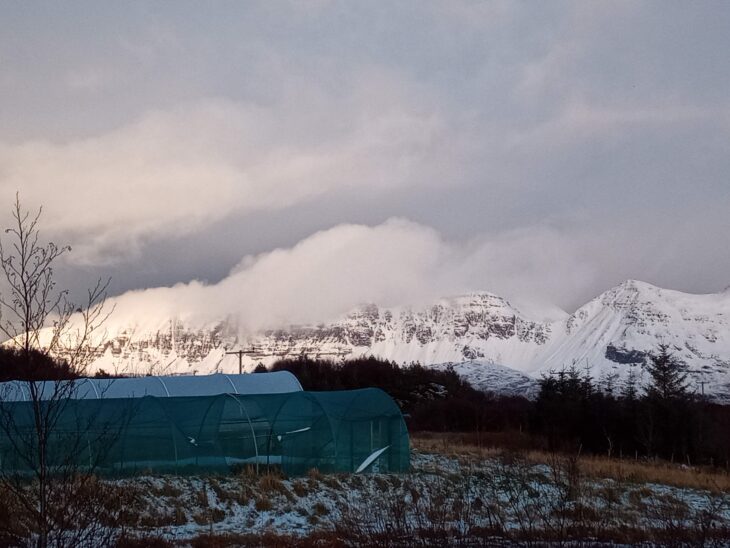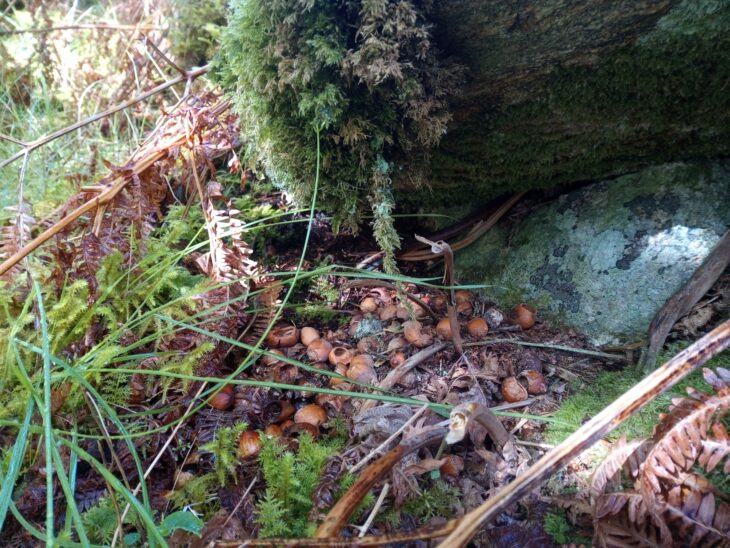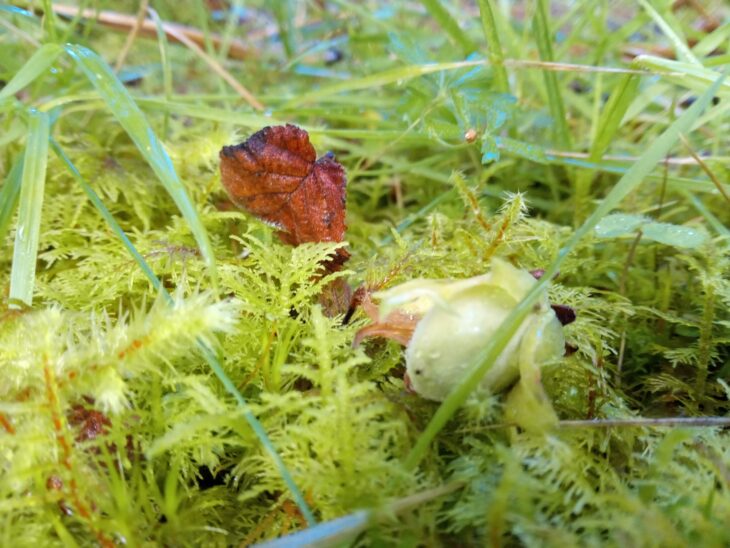Seed collecting season at Little Assynt Tree Nursery
Tree nursery assistant, Josie Gibberd gives us a glimpse into the practicalities and joy of seed collecting.

Quinag and Little Assynt Tree Nursery in the Snow
Over the past few months we’ve been out with volunteers collecting seeds from rowan, birch, dog rose, hazel, oak, alder and holly trees, amongst others. The last species we need to collect this year is juniper, but snow has put that on hold for the moment.
The process of seed collecting itself is not too complicated, we turn up to known local sites with suitable carrier bags (no holes) and a repurposed shepherd stick, which we can use to pull branches closer to us, and spend the day collecting what we can. The main thing to bear in mind is to collect from as many different individuals as possible to get a good genetic variety, and not to strip any tree bare. Nuts, berries and seeds are an important food source for many different creatures and we wouldn’t want to deprive them of a meal. In fact, it is the diversity of life that trees support, as a food source, but also as habitat and shelter, that is one of the main reasons we seek to grow them in the first place.
This isn’t the only way we have to consider the woodland creatures in our collection plans. With some tree species, it can be a bit of a race to collect nuts or berries before the small rodents or birds eat them all. Hazelnuts, in particular, require us to move fast. When hazelnut season is around the corner, we’ll keep a close eye on trees so that as soon as the nuts are close to ripe, we can collect a share. Leave it too late and we’d be left with piles of empty shells and disappointment.

Different tree species come with different challenges, whether that’s physically avoiding thorns and spikes, competition with other creatures or scarcity – for example, juniper berries are few and far between and require some keen eyes. Other species are difficult in that they produce seed inconsistently year to year. Oak trees may produce an abundance of acorns one year and hardly any the next. In fact, this year, we collected a grand total of thirteen acorns, in contrast to the thousands we collected last year. As the nursery only grows local provenance seeds, there is not much to be done about this. We can only collect, and grow on, what is being produced in the area. Thankfully, for most species, there is usually more than enough for what we need.

Seed collecting is one of my favourite parts of working at Little Assynt Tree Nursery. It’s an opportunity to connect with the bigger picture of the work we do and to see the future of our trees reflected in those they have come from. Whether our trees ultimately go on to a large-scale reforestation project or a small croft shelter belt, the hope is that they’ll one day be setting seed of their own. It’s with this in mind that I often find myself offering an unspoken ‘thank you’ to the trees that provide a livelihood, not just to the birds and the beetles and the mice, but to me too.
As ever, we’d like to say a huge thank you to all the volunteers who help with seed collection, and all aspects of the tree nursery. If you live locally and would be interested in helping out, you can email n.clooney@coigach-assynt.org for more information.
Little Assynt Tree Nursery is part of the Coigach and Assynt Living Landscape.
Read the next blog in this series: The Journey of a Tree Seed – Wintering.
Help protect Scotland’s wildlife
Our work to save Scotland’s wildlife is made possible thanks to the generosity of our members and supporters.
Join today from just £3 a month to help protect the species you love.
Preface
Tree nursery assistant, Josie Gibberd gives us a glimpse into the practicalities and joy of seed collecting. Quinag and Little Assynt Tree Nursery in the Snow Over the past few …
